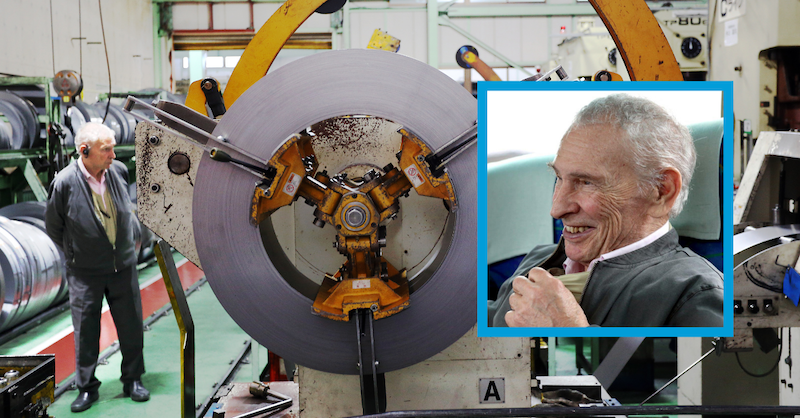
Making lean relatable and meaningful
INTERVIEW – General Electric’s Angie Norman talks to our editor about the lean journey of the company’s Finance department and how the area became a driver of GE’s overall transformation.
Interviewee: Angie Norman, Executive Director and Finance Senior Lean Leader, General Electric
Roberto Priolo: You have a very interesting story of transformation to tell. Let’s start with some background information.
Angie Norman: GE is on a multi-year transformational journey. Leveraging lean to improve customer and shareholder outcomes is at the center of everything we do, and, over the past two years, the Finance function has come to the forefront of this transformation as a major driver. What makes this example so unique is that the function is using a blend of lean and digitization to continuously improve skills and processes. Our key goal is to ensure that the right data enables the right decisions at the right time, which means transforming GE’s financial reporting and operations. Reengineering the way processes work is creating lots of improvement opportunities for us.
RP: How did you make that happen?
AN: Because I spent 25 years in supply chain operations before moving to Finance, in the first 90 days of my engagement, I focused on going to gemba to talk to our talented finance professionals to understand their challenges. During those conversations, I found we were speaking a very different language. So, my goal from the get-go was to make lean relatable and meaningful for people.
We did that by ensuring lean would provide solutions to the main problem we identified in the department: a lack of capacity. In 2021, to show finance professionals how to recognize waste in all its forms, we decided to organize a week-long “Waste Walk” program, which we designed, tested, and executed in 12 weeks.
On day one, we put lean in context for our finance people and taught them how to see waste (What is it? What does it look like? How do I visualize it? How do I go and see? What questions do I ask at gemba?). On day two, we started to talk about the power of digitization, introducing some of the tools and ideas now available in the digital market and used by Digital Technology professionals here at GE, that could help the team in their work. On the afternoon of day two, and then on days three and four, attendees started problem solving at gemba.
At gemba, people saw examples of waste across the process and had the chance to put into practice what they had learned. The main objective for our ‘Waste Walk Week’ was to evaluate performance and measure the number of non-value-added (nVA) hours across the world. By the end of the week, we had identified and implemented solutions to eliminate 19,700 nVA hours, a result we celebrated with the whole team. With more than 1,600 engaged employees, this exercise was a powerful catalyst for our transformation. It showed the team how to tell value-added work and non-value-added work apart.
From that moment on, the blend of lean and digital we have deployed has done wonders for us. Lean is leveraged to unearth the waste, while digital tools are used to automate the value object that’s left. This drive for improvement has then grown organically, taking us to where we are today: from the 19,700 nVA hours we generated last August during the Waste Walk Week, we went to 30,000 at the end of 2021 and to over 65,000 today (a sum of time that equates to over seven years of capacity created!).
RP: Can you share some other key achievements?
AN: Lean has played a huge part in unlocking the team’s potential by helping them understand the difference between value-added and non-value-added work and how to eliminate waste in order to create capacity for them to focus on the work that truly drives business performance – a win-win for them and for GE. So, there was a clear benefit in terms of cost.
To assess how well we are doing, we measure improvements using our balanced scorecard ‘SQDC’ (safety, quality, delivery, cost) from our customers lens, and we’ve achieved results across each.
For example, our goal to create capacity by eliminating process waste has led to a keener focus on ways to improve work-life balance within several of our teams, particularly during critical periods, such as quarterly close. To address this, our corporate Financial Planning and Analysis team ran a value stream mapping exercise, which resulted in eliminating well over 200 hours from the close cycle (or roughly two to four hours of extra work per day) through better flow and sequencing and the introduction of standard work and, in terms of quality improvements, by eliminating 65,000 nVA hours, we also we eliminated over 6,000 ‘defects’, and reduced delivery and lead times.

RP: How do you capture and share learning?
AN: We have a lot of information-sharing channels, including a newsletter with video interviews, targeted messages about building a lean culture and mindset lean communications that Larry Culp, our Chairman and CEO, Carolina Dybeck Happe, our CFO and other senior leaders send out regularly. We also use Yammer to share lean successes with the global teams. Knowledge sharing is an area we want to continue to develop, in that we understand the role it played in helping us achieve such great results. Besides, with similar processes taking place all around the world, there are a lot of opportunities for setting new standards and best practices that can be applied anywhere.
RP: What is role of digitization in this transformation, especially as it pertains to its relationship with Lean Thinking?
AN: In finance, the combined power of lean and digital is phenomenal. Together, they create an integrated solution that continues to pay back to across all areas of the company, including finance. Being able to identify waste through lean and then automate the execution of the value object through digital tools has been invaluable for GE Finance. An example is automating mundane, repetitive tasks through robotic process automation (RPA). When we looked at the eighth form of waste – skills – this was an important point to get across to our team: they saw that piece of work as value-added, but there was no need for them to do it manually when it could be automated. Today, the RPA does the heavy lifting for them, providing them with a report at 7:00 am each morning.
We are also striving to reduce our reliance on Microsoft Excel for data analyses, reconciliations, planning and analysis, replacing the manual manipulation required with Excel with data visualization tools like Tableau and using Alteryx to prep, cleanse and visualize data flow and then present it in a standard format to enable decision making.
RP: Did you face any resistance when trying to introduce lean practices in this department?
AN: We did, at first. To show people the value of lean, we had to make it meaningful for them and ensure it gave back to them – in this case through capacity creation. We also made an effort to create a safe environment in which they could learn and experiment with lean tools and practices and, because lean can only be learned on the job, we have a team of lean and digital coaches supporting the department’s process improvement projects. It’s important that nobody is left alone, even though we understand that ultimately the incentive has to come from the individual.
If this transformation has become self-reinforcing, it is because we were able to show people that what they were doing wasn’t necessarily what they needed to do. Once they saw in lean an opportunity to do things differently, in a way that helps them do their job better, they embraced it fully.
RP: What was the role of leadership in this transformation?
AN: As leaders, being present is the only effective way and sends a strong message to the organization. Not only did Carolina Dybeck Happe, GE’s CFO, who has a great understanding of lean and digital, support the time investment and development of the solutions to enable the Waste Walk Week to take place, but the whole finance leadership team was very much engaged in the activity, too.
Involving leaders in the Waste Walk Week was particularly useful. As the “customers” of the finance process, they were able to provide invaluable feedback to the team on a rather time-consuming part of the work – the consolidation of data and creation of reports for the corporate office. The interaction we facilitated clarified what was truly value-added for the leadership team and what wasn’t, telling our finance professionals where to focus their capacity. It turned out, for example, that report content (and, therefore, the amount of work) could be reduced by 30%.
The closer senior leaders can get to the place the work is done, the more meaningful it becomes to them, and the quicker they can make decisions on what is needed and what is not to be able to run the business.
RP: What would you recommend to other leaders or organizations bringing lean into a new environment?
AN: To bring your knowledge across domains, you need to listen actively to the needs of that part of the organization. Across the finance function at GE, it was about finding the common place where there was meaningful and relatable need to boost capacity, which my lean experience told me we could tap into to bring about change.
Some of it also entails converting your language as a lean professional into something that people understand. We, for instance, got rid of all Japanese terms and introduced more accessible language. We also changed the examples in our training material to ‘transactional lean’ case studies that are much more relevant, relatable, and meaningful to our finance professionals.
RP: How are you sustaining results?
AN: We have a sustainment phase for every kaizen we run, where we assess whether the improvement is maintained at 30, 60 and 90 days. That’s what allows us to say that change is sticking.
For lean to be credible, it must be sustained. Volume of activity alone is not that important if it is not sustained over time. That’s what makes people know that lean is real, after all.
THE INTERVIEWEE

Read more


INTERVIEW – PL speaks to one of America's leading experts on the Toyota Production System about Toyota's unique approach to integrating product development with all other functions in the business.


FEATURE – In May, the author told us how the IT department at Fuji Xerox Australia used book clubs to engage people in lean. In this update, he explains how the efforts were brought over to a different area of the business.


ROUNDUP – Our editor reflects on the all-important lean concept of “respect for people” and shares some of the best content published by Planet Lean on the subject.


FEATURE – On October 31st, the Lean Movement lost one of his pioneers. In this piece, Dan Jones reflects on Freddy Ballé’s legacy.

